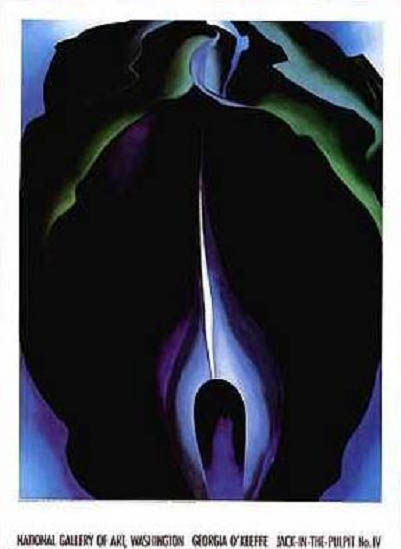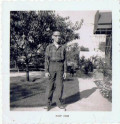Georgia O'Keeffe: The Secrets of Her Success Part 3

II. A Unique Character
Georgia O’Keeffe was definitely a unique person and this uniqueness had a large impact on her success as an artist. After all, if she had been like all of the other women of her time, she never would have broken free from traditional art and created her experimental charcoal drawings.
The most unique aspect of O’Keeffe was her personality. Even as a young child she was described as independent (Sills 6) and it was said that she “saw the world around her a little differently” (Education). She met and befriended Anita Pollitzer at the Art Students League in New York. Anita stated that “she was different . . . dignified, haughty without meaning to be . . . [and] she stood apart” (Pollitzer 1). She went on to say, “there was something Spartan about her, as direct as an arrow, and completely independent” (3). As an artist, she could be sharp, unpleasant, and impatient with people (Gherman 93). One museum director stated that she “is easy to get along with as long as you do exactly what she wants” (111). Interestingly, Anita also observed that “fame does not seem to be as meaningful or real to Georgia as the mesa of New Mexico or the petals of a white rose” (Pollitzer x). Indeed, she did prefer nature to the company of people. She once stated that “if only people were like trees, I might like them better” (Gherman 13).
O’Keeffe was also unique because of her ability to think for herself. One of the earliest examples of this was her fashion sense. As children, her sisters all wore frilly dresses with bows and ribbons. However, O’Keeffe chose not to dress that way. While she was at Chatham, the students would tease “her at every opportunity about the time she had been mistaken for a housemaid because of her simple dress” (Gherman 32). For the majority of her life she wore black (Krull 70). When she was asked about this she would usually give one of two responses, that if she took the time to “choose colors to wear, she would have no time to pick any to paint” or that she was “so sensitive to color that if she wore a red dress, she would feel obligated to live up to its flamboyance” (Lisle 147). As an adult, while she was teaching at the West Texas State Normal College, she had “radical views about the United States’ entry into the war with Europe . . . along with other non-mainstream opinions [that] shock[ed] this small Texas town” (“Young”). Perhaps the best example of her thinking for herself was demonstrated in 1915. Before she began her series of experimental charcoal drawings she came to the realization that due to her art training “she’d begun copying [the styles of] other artists” and “for the rest of her life, she was determined to paint what she saw in her own way” (Education).
O’Keeffe had many odd habits. For example, she rarely signed any of her work, she “instead would sometimes print an ‘O’K’ on the back on the canvas” (“O’Keeffe and Stieglitz”). On May 4, 1917, Henry Tyrell, a writer for the Christian Science Monitor, wrote about one of her early shows. In frustration he stated that “the recent work . . . has to speak for itself as it is not numbered, catalogued, labeled, lettered, or identified in any way -- in fact, it is not even signed” (Lisle 85). This habit may have been the result of the year that O’Keeffe spent at the Sacred Heart Academy, a private school that she attended in 1901 (Turner 98). The nun that taught her art class would sign her name in dark pencil on her drawings. O’Keeffe noticed that from a distance you could see her name, but not the drawing itself and this upset her (Gherman 19). Another of her odd habits was her treatment of her work in progress. At the end of the day she would turn the easel to face the wall. “If it was something that she wasn’t sure of, she would put it into the closet for a while” (Pollitzer 236). Perhaps her oddest behavior of all, O’Keeffe had encouraged Pollitzer to write her book, but “when the compiled manuscript was presented to her, O’Keeffe refused to grant permission for its publication.” She did not provide a reason for this decision. As a result, the book was not published until after her death (Pollitzer xxi).
(Coming Soon: Georgia O'Keeffe: Part 4-- The Secrets of Her Success)
A complete list of research sources will be included in the final chapter of this series.







